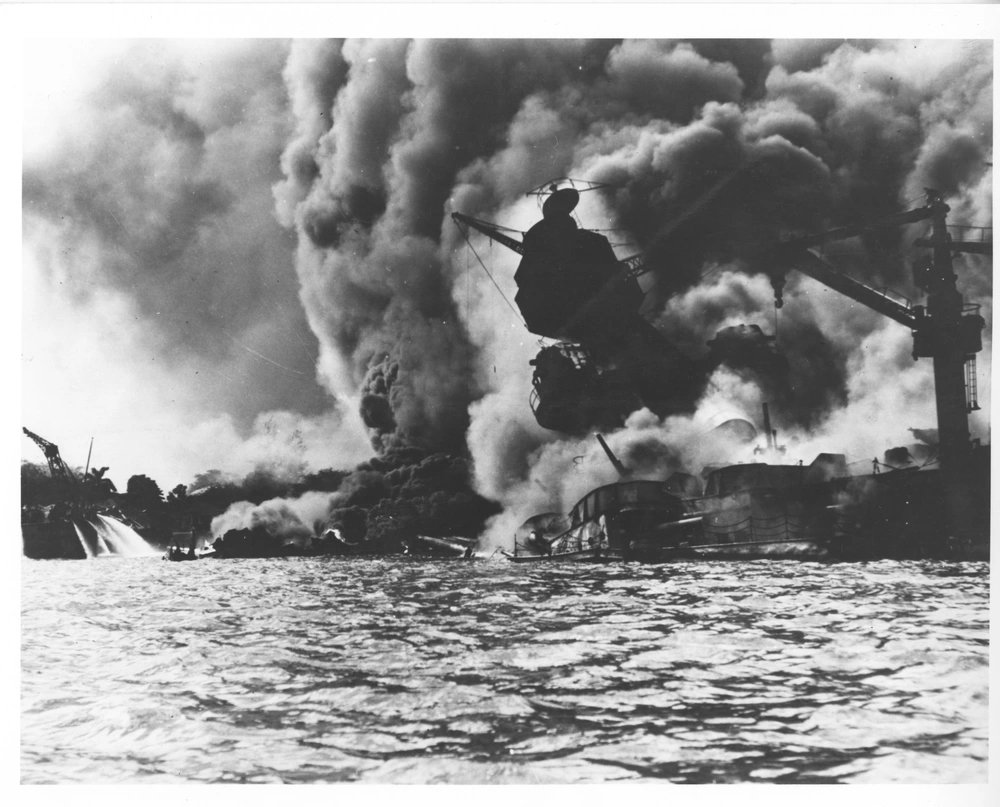On Dec. 7, 1941, Japan conducted a surprise attack against the U.S. Pacific fleet anchored at Pearl Harbor. In total, 19 U.S. ships were crippled or destroyed, as well as over 350 aircraft. The attack resulted in the death of 2,403 American Sailors, Soldiers and civilians, and injured more than 1,000. Of those killed, 1,117 were on board the USS Arizona, which exploded after a bomb hit one of the ships 14-inch/45-caliber gun explosive magazines.
The following day, President Franklin D. Roosevelt addressed Congress declaring, “Yesterday, December 7, 1941 – a date which will live in infamy – the United States of America was suddenly and deliberately attacked by naval and air forces of the Empire of Japan.”
“No matter how long it may take us to overcome this premeditated invasion, the American people in their righteous might will win through to absolute victory,” stated Roosevelt. “I believe I interpret the will of the Congress and of the people when I assert that we will not only defend ourselves to the utmost but will make very certain that this form of treachery shall never endanger us again.”
Although the events of Dec. 7 were devastating, the Pacific fleet was not as crippled by the attack as the Japanese Empire had hoped. Battleships, making up the majority of the ships at harbor, had become a somewhat dated platform. Aircraft carriers, the Navy’s more critical assets, were not in the harbor at the time. In addition to this, onshore facilities such as repair shops, oil storage depots, submarine docks and shipyards were largely unaffected.
Due to these facilities being relatively unharmed, the recovery of ships was greatly accelerated, but still took tremendous effort. However, according to an article published by History.com, “After Pearl Harbor: The Race to Save the U.S. Fleet” on Dec. 1, 2016, Navy and civilian divers spent a total of some 20,000 hours underwater during the salvage operations, making around 5,000 dives.
Within three months, 11 ships that had been damaged in the attack were back in the fight, and by the end of the war, all but two had been raised and returned to service much to the surprise of Japanese Admiral Isoroku Yamamoto, the admiral who orchestrated the Pearl Harbor attack. Isoroku Yamamoto went on to say, “I shall run wild considerably for the first six months or a year, but I have utterly no confidence for the second and third years,” nodding to the fact that he thought the attack on the United States was a bad idea to begin with.
The Japanese military intended to cripple the Pacific Fleet long enough to establish a bigger presence in the region and believed the attack on Dec. 7, 1941, to be highly successful. Fortunately the majority of the U.S. ships present at the battle of Pearl Harbor were recovered and saw later battles in the war. On D-Day in June of 1944, the USS Nevada helped the allies defeat the German defensive. Toward the end of the war in 1944, the USS West Virginia, USS California, USS Tennessee, USS Maryland and USS Pennsylvania got their revenge against approaching Japanese naval forces in the Surigao Strait.
Japan and the United States have been allies for many years, but the events of Pearl Harbor still continue to be remembered in the hearts and minds of citizens on both sides. On this day –Dec. 7, 2023– we remember the victims of one of the worst attacks on U.S. troops in U.S. history. Terror, grief, loss, tragedy, anger and treachery are some of the words many would use to describe the events of Pearl Harbor, and although it happened over 80 years ago, it continues to influence policy, strategy and the hearts and minds of people to this day.

